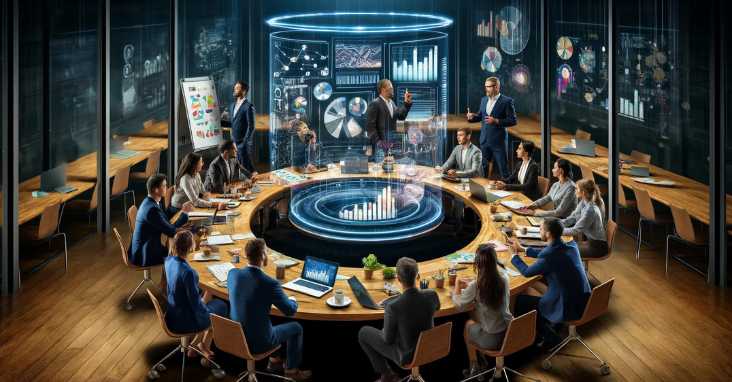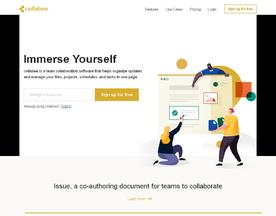What is a breakout session? A breakout session is a focused, smaller group meeting within a larger event, aimed at deep discussion or collaborative work on specific topics.
Breakout sessions are a popular feature of conferences, meetings, and other events that allow attendees to delve deeper into specific topics or network with like-minded individuals. These sessions typically involve smaller groups of participants and are led by a facilitator or subject matter expert. Breakout sessions can take many forms, from interactive workshops to panel discussions and roundtables.
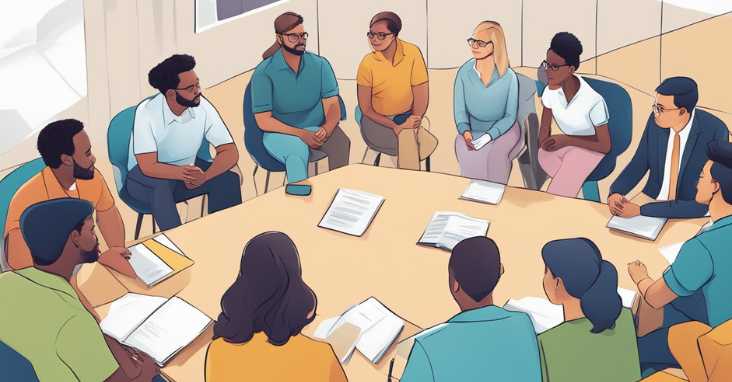
Planning a successful breakout session requires careful consideration of the session format, content delivery, and participant engagement. The facilitator must create an environment that promotes collaboration and networking while also ensuring that the session stays on track and meets its objectives. Technology and tools can also play a key role in enhancing the participant experience and delivering content in an engaging and interactive way.
Key Takeaways
- Breakout sessions are a popular feature of events that allow attendees to dive deeper into specific topics or network with like-minded individuals.
- Planning a successful breakout session requires careful consideration of the session format, content delivery, and participant engagement.
- Technology and tools can play a key role in enhancing the participant experience and delivering content in an engaging and interactive way.
Planning Your Breakout Session
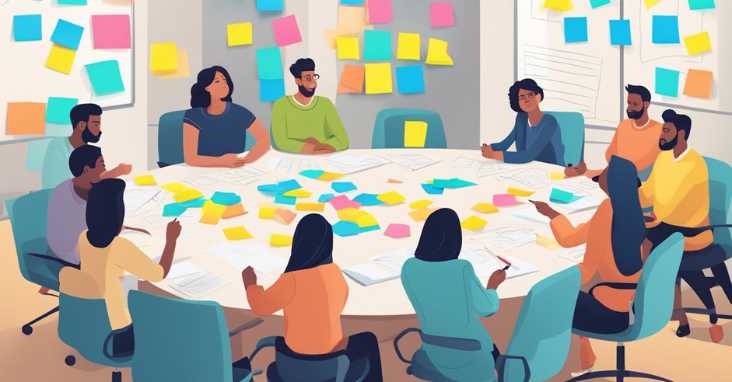
When it comes to planning a successful breakout session, there are several key factors that need to be considered. In order to ensure that the session is engaging, informative, and effective, it is important to define clear objectives, select targeted content, choose the right technology, and understand the audience.
Defining Clear Objectives
Defining clear objectives is the first step in planning a successful breakout session. This involves identifying what the session is intended to achieve, and what attendees should be able to take away from it. Objectives should be specific, measurable, and achievable, and should be communicated clearly to attendees in advance.
Selecting Targeted Content
Once clear objectives have been established, the next step is to select targeted content that will help attendees achieve those objectives. This could include presentations, case studies, interactive exercises, or other forms of content that are relevant to the topic being discussed. It is important to ensure that the content is engaging, informative, and presented in a way that is accessible to all attendees.
Choosing the Right Technology
Technology can be a powerful tool for engaging attendees and enhancing the effectiveness of a breakout session. This could include tools such as interactive whiteboards, polling software, or other forms of technology that enable attendees to participate actively in the session. It is important to choose technology that is appropriate for the session, and to ensure that attendees are comfortable using it.
Understanding the Audience
Finally, it is important to understand the audience when planning a breakout session. This involves considering factors such as learning styles, interests, and experience levels, and tailoring the session accordingly. By understanding the audience, it is possible to create a session that is engaging, informative, and relevant to their needs.
Overall, planning a successful breakout session requires careful consideration of a range of factors, from defining clear objectives to choosing the right technology. By taking the time to plan carefully and tailor the session to the needs of the audience, it is possible to create a session that is engaging, informative, and effective.
For more information on planning breakout sessions, check out this resource.
Session Formats and Engagement
When it comes to breakout sessions, there are several formats that can be used to engage attendees. In this section, we will explore some of the most popular formats and how they can be used to create an interactive and engaging experience for participants.
Interactive Workshops
Interactive workshops are a popular format for breakout sessions. They provide attendees with the opportunity to participate in hands-on activities and learn new skills. Workshops can be designed to suit different learning styles and can range from beginner to advanced levels. To make the most of interactive workshops, it is important to have a clear agenda, provide adequate resources, and have experienced facilitators to guide the participants.
Panel Discussions
Panel discussions are another popular format for breakout sessions. They provide attendees with the opportunity to hear from experts in a particular field and ask questions. Panel discussions can be structured in different ways, such as having a moderator to facilitate the conversation, or having each panelist present their own perspective. To make the most of panel discussions, it is important to have a diverse panel of experts, provide clear guidelines for the discussion, and encourage audience participation.
Lightning Talks
Lightning talks are short, focused presentations that are designed to convey information quickly. They are typically no longer than 10 minutes and can cover a range of topics. Lightning talks are a great way to provide attendees with a variety of perspectives and information in a short amount of time. To make the most of lightning talks, it is important to have a clear structure, provide visual aids, and encourage audience participation.
Live Polling and Q&A
Live polling and Q&A sessions are a great way to engage attendees and get real-time feedback. Polls can be used to gauge audience opinions on a particular topic, while Q&A sessions can be used to answer questions and provide additional information. To make the most of live polling and Q&A sessions, it is important to have a clear structure, provide opportunities for audience participation, and have experienced facilitators to guide the discussion.
For more information on breakout session formats and engagement techniques, check out this article from Event Manager Blog.
Networking and Collaboration
Breakout sessions provide an excellent opportunity for attendees to network and collaborate with each other. Through facilitated activities, collaborative problem-solving, and speed networking sessions, attendees can build relationships and exchange ideas with their peers.
Facilitated Networking Activities
Facilitated networking activities are designed to help attendees connect with each other in a structured and meaningful way. These activities can include icebreakers, group discussions, and team-building exercises. By participating in these activities, attendees can get to know each other on a deeper level and build lasting connections that can help them in their personal and professional lives.
One popular facilitated networking activity is the “two truths and a lie” game. In this game, each attendee shares three statements about themselves – two of which are true and one of which is a lie. The other attendees then have to guess which statement is the lie. This game is a fun and engaging way to break the ice and get people talking.
Collaborative Problem-Solving
Collaborative problem-solving is another important aspect of breakout sessions. By working together to solve complex problems, attendees can learn from each other and develop new skills. This can be particularly useful in industries where innovation and creativity are highly valued.
One effective way to facilitate collaborative problem-solving is through design thinking workshops. In these workshops, attendees work together to identify problems, generate ideas, and prototype solutions. This process encourages creativity and helps attendees develop a deeper understanding of the problem they are trying to solve.
Speed Networking Sessions
Speed networking sessions are a fast-paced and exciting way to meet new people. In these sessions, attendees are paired up and given a set amount of time to introduce themselves and exchange business cards. After the time is up, attendees switch partners and repeat the process.
Speed networking sessions are a great way to meet a large number of people in a short amount of time. They can be particularly useful for attendees who are looking to expand their professional network quickly.
Overall, networking and collaboration are essential components of breakout sessions. By participating in facilitated activities, collaborative problem-solving, and speed networking sessions, attendees can build lasting relationships and gain valuable insights from their peers. For more information on effective networking strategies, check out this article from Forbes.
Logistics and Environment
Choosing the Right Venue
Selecting the right venue is a crucial aspect of organizing a successful breakout session. The venue should be chosen based on the number of attendees, the purpose of the session, and the budget allocated for the event. The location should be easily accessible and should have adequate parking facilities. Additionally, the venue should have the necessary equipment and technology to support the session’s requirements.
When selecting a venue, it is important to consider the environmental impact of the location. Choosing a venue that is environmentally friendly can reduce the carbon footprint of the event. Some venues have implemented sustainable practices such as recycling, energy-efficient lighting, and water conservation measures. It is recommended to choose a venue that has received certifications such as LEED or ISO 14001, which ensures that the venue has met specific environmental standards.
Seating Arrangements and Space
Seating arrangements and space are important factors to consider when organizing a breakout session. The seating arrangement should be based on the session’s purpose, the number of attendees, and the type of activities planned. The space should be sufficient to accommodate all attendees comfortably and should have adequate ventilation and lighting.
It is important to consider the accessibility requirements of attendees when selecting the seating arrangements and space. The venue should be wheelchair accessible and have appropriate facilities for attendees with disabilities. Additionally, the seating arrangement should be flexible and allow for easy movement and interaction between attendees.
Time Management
Time management is a critical aspect of organizing a breakout session. The session should be planned and scheduled in a way that ensures that all activities are completed within the allocated time. The schedule should be communicated to attendees in advance to ensure that they are aware of the session’s timeline.
To ensure that the session stays on track, it is recommended to have a timekeeper who can monitor the time and alert the facilitator when it is time to move on to the next activity. Additionally, it is important to allocate sufficient time for breaks and networking opportunities.
When planning a breakout session, it is important to consider the logistics and environment of the event. By choosing the right venue, seating arrangements, and managing time effectively, organizers can ensure that the session runs smoothly and achieves its intended purpose. For more information on planning successful breakout sessions, visit Eventbrite’s Guide to Planning a Successful Breakout Session.
Technology and Tools
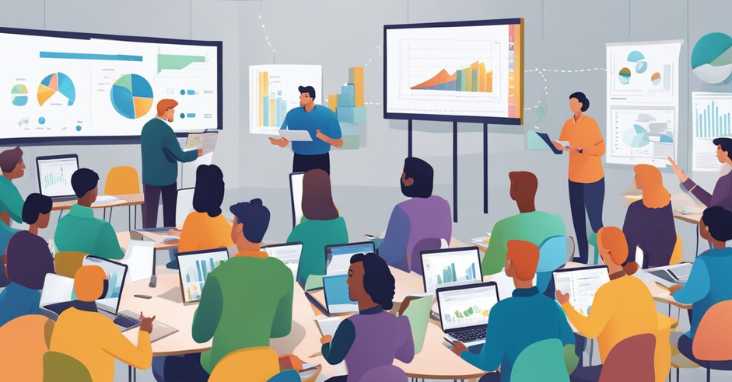
Utilizing Event Technology
Technology has become an integral part of event planning, and it has revolutionized the way events are organized and executed. The use of event technology has made it easier to manage events, increase engagement, and improve overall attendee experience. One of the most common event technologies used today is mobile event apps. Mobile event apps provide attendees with a personalized experience, allowing them to access event information, schedules, and networking opportunities on their mobile devices.
Another popular event technology is event management software. Event management software helps organizers plan and manage events more efficiently, from registration and ticketing to marketing and analytics. With event management software, organizers can automate many of the time-consuming tasks associated with event planning, such as sending out invitations, tracking RSVPs, and managing guest lists.
Tech Tools for Engagement
Engagement is a critical component of any successful event. Luckily, technology has made it easier than ever to engage attendees and keep them interested throughout the event. One of the most effective ways to engage attendees is through gamification. Gamification involves incorporating game-like elements into the event, such as challenges, quizzes, and contests. This can help keep attendees engaged and motivated throughout the event.
Another effective engagement tool is live polling. Live polling allows event organizers to get real-time feedback from attendees, which can be used to improve the event on the fly. Live polling can also be used to create interactive sessions, allowing attendees to participate in discussions and provide their input on various topics.
Virtual Event Platforms
Virtual events have become increasingly popular in recent years, and this trend is expected to continue. Virtual event platforms allow organizers to host events online, which can be accessed by attendees from anywhere in the world. Virtual event platforms offer many of the same features as traditional events, such as keynote speakers, breakout sessions, and networking opportunities.
One of the most significant advantages of virtual events is their accessibility. Virtual events can be attended from anywhere, which makes them an excellent option for attendees who are unable to travel. Virtual events are also more cost-effective than traditional events, as they do not require travel or accommodation expenses.
To learn more about event technology and tools, check out Event Manager Blog. They offer a wealth of information on event technology, including the latest trends and best practices.
Content Delivery and Storytelling
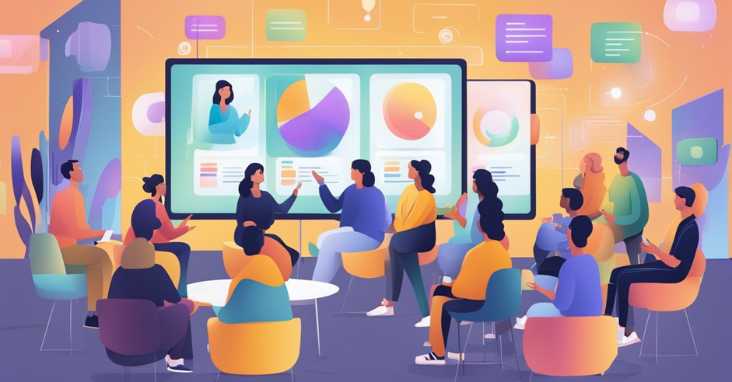
When it comes to delivering content in a breakout session, the way it is presented can make all the difference. Incorporating storytelling can be an effective way to engage the audience and make the content more memorable.
Incorporating Storytelling
Storytelling allows the audience to connect with the content on a personal level. It can help to illustrate a point and make it more relatable. For example, if the breakout session is about leadership, the speaker could tell a story about a successful leader who overcame obstacles to achieve their goals. This can help to inspire the audience and make the content more memorable.
Using Real-Life Examples
Real-life examples can also be an effective way to deliver content. It allows the audience to see how the content applies to real-world situations. For example, if the breakout session is about sales, the speaker could use real-life examples of successful sales techniques and how they have been applied in the past. This can help the audience to understand the content better and make it more applicable to their own situations.
Adapting to Diverse Learning Styles
It is important to adapt the content delivery to the diverse learning styles of the audience. Some people may be visual learners, while others may be auditory or kinesthetic learners. Using a variety of techniques such as visual aids, interactive activities, and group discussions can help to engage the audience and cater to their individual learning styles.
In conclusion, incorporating storytelling, using real-life examples, and adapting to diverse learning styles can all help to make content delivery more effective in a breakout session. By engaging the audience and making the content more relatable, memorable, and applicable, the speaker can ensure that the audience gets the most out of the session.
For more information on how to incorporate storytelling into content delivery, check out this link from Forbes.
Enhancing Participant Experience
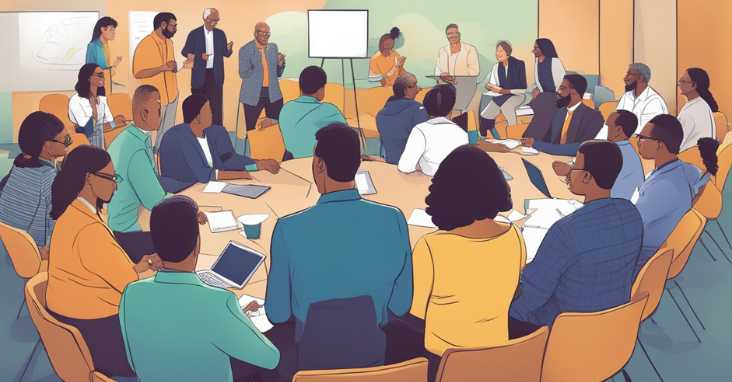
When it comes to breakout sessions, enhancing participant experience is crucial to achieving the desired outcomes. Engaged participants are more likely to retain information and actively participate in discussions. In this section, we will explore some techniques to improve engagement, minimize distractions, and the facilitator’s role in engagement.
Active Participation Techniques
Active participation is key to keeping participants engaged and involved. One effective technique is to use interactive activities such as group discussions, brainstorming sessions, and role-playing. These activities encourage participants to share their ideas and opinions, leading to a more dynamic and engaging session.
Another technique is to use technology to enhance participation. For example, using online polls or quizzes can help participants stay engaged and provide instant feedback. Additionally, using virtual breakout rooms can help participants collaborate and share their ideas in a smaller group setting.
Minimizing Distractions
Distractions can hinder engagement and disrupt the flow of the session. To minimize distractions, facilitators should create a distraction-free environment by eliminating any unnecessary noise or visual distractions. Additionally, setting clear expectations and ground rules can help participants stay focused and engaged.
Another effective technique is to use breaks and physical activities to combat distractions. Taking short breaks can help participants recharge and refocus, while physical activities such as stretching or walking can help increase blood flow and improve focus.
Facilitator’s Role in Engagement
The facilitator plays a critical role in keeping participants engaged and involved. They should actively encourage participation, listen to participants’ ideas, and provide constructive feedback. Additionally, the facilitator should be well-prepared and knowledgeable about the topic to answer any questions and guide discussions effectively.
One effective technique for facilitators is to use open-ended questions to encourage participation and stimulate discussion. Additionally, they should be aware of the different learning styles and adapt their approach to meet the needs of all participants.
Overall, enhancing participant experience is crucial to the success of breakout sessions. By using active participation techniques, minimizing distractions, and utilizing the facilitator’s role effectively, participants are more likely to stay engaged and achieve the desired outcomes. For more information on enhancing participant experience, check out this resource.
Post-Session Activities
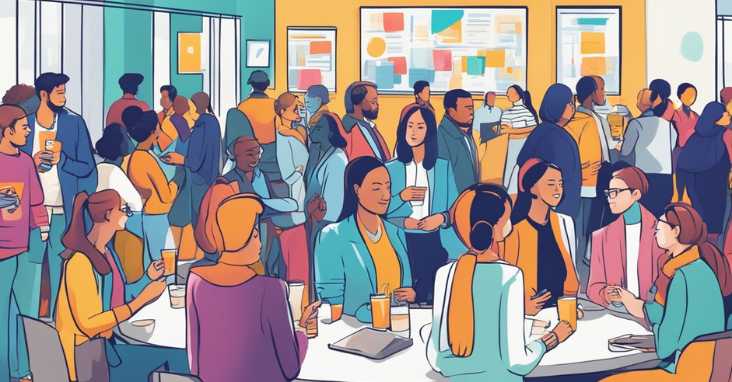
After a successful breakout session, it is important to follow up with participants to ensure that the ideas generated during the session are put into action. This section outlines some post-session activities that can help to solidify the outcomes of the session.
Follow-Up Meetings
One effective way to ensure that the ideas generated during the breakout session are implemented is to schedule follow-up meetings. These meetings can be used to discuss progress, brainstorm solutions to any challenges that have arisen, and assign tasks to team members. By scheduling follow-up meetings, participants are more likely to stay engaged and motivated to see the ideas through to completion.
Feedback and Surveys
Another way to ensure that the outcomes of the breakout session are put into action is to gather feedback from participants. This can be done through surveys or other forms of feedback. By gathering feedback, organizers can identify areas for improvement and make adjustments for future sessions. Additionally, feedback can help to identify which ideas generated during the session are most promising and should be prioritized.
Actionable Takeaways
To ensure that the outcomes of the breakout session are put into action, it is important to identify actionable takeaways. These takeaways should be specific, measurable, achievable, relevant, and time-bound (SMART). By focusing on actionable takeaways, participants are more likely to stay motivated and see the ideas through to completion.
One resource that can help to identify actionable takeaways is MindTools. This website provides a detailed overview of the SMART framework and offers tools and resources for setting and achieving SMART goals.
By implementing these post-session activities, organizers can ensure that the ideas generated during the breakout session are put into action. By scheduling follow-up meetings, gathering feedback, and identifying actionable takeaways, participants are more likely to stay engaged and motivated to see the ideas through to completion.
Frequently Asked Questions
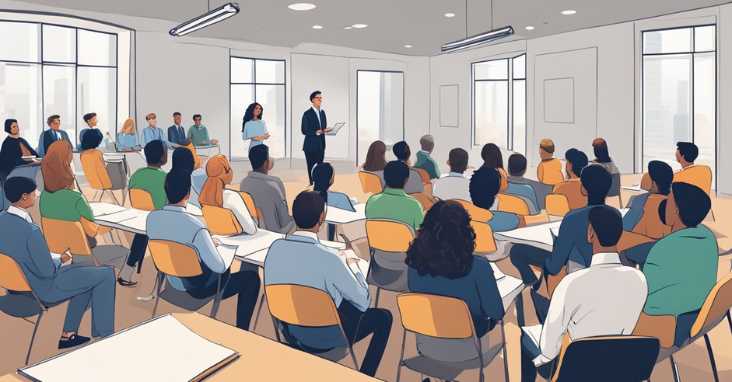
How do you structure an effective breakout session?
An effective breakout session should have a clear objective and structure. It should begin with an introduction and explanation of the objective, followed by a warm-up activity to help participants get comfortable with each other. The main activity should be designed to achieve the objective and should be followed by a debriefing session to discuss the outcomes. The session should end with a summary of the key takeaways and action items.
What are some engaging activities for breakout sessions?
Engaging activities for breakout sessions include brainstorming, role-playing, group discussions, and problem-solving exercises. These activities should be designed to encourage collaboration and participation among participants. The use of visual aids such as videos, images, and charts can also make the session more engaging.
How can breakout sessions be integrated into virtual meetings?
Breakout sessions can be integrated into virtual meetings using video conferencing tools that allow participants to be divided into smaller groups. The facilitator can assign participants to breakout rooms and provide instructions for the activity. The use of collaborative tools such as virtual whiteboards and chat rooms can also enhance the virtual breakout session experience.
What are the best practices for facilitating breakout sessions in an agile environment?
In an agile environment, breakout sessions should be designed to support the agile process. The facilitator should ensure that the session aligns with the sprint goals and objectives. The session should be timeboxed and focused on achieving a specific outcome. The use of agile tools such as user stories and retrospectives can also enhance the effectiveness of the session.
How can you measure the success of a breakout session?
The success of a breakout session can be measured by evaluating the achievement of the objective, the level of participation and engagement among participants, and the quality of the outcomes. Feedback from participants can also provide valuable insights into the success of the session.
What are the recommended time frames for different types of breakout sessions?
The recommended time frames for breakout sessions depend on the objective and the complexity of the activity. Short sessions of 15-30 minutes can be used for warm-up activities and quick brainstorming sessions. Longer sessions of 1-2 hours can be used for more complex activities such as problem-solving and decision-making exercises. It is important to ensure that the session is timeboxed and that the time is used effectively to achieve the objective.
For more information on breakout sessions, check out this guide from Mind Tools.
Compare hundreds of Team Collaboration Software in our Software Marketplace

